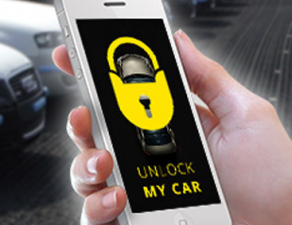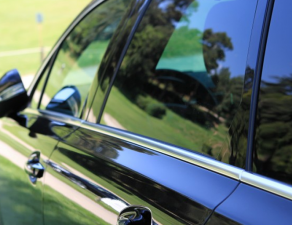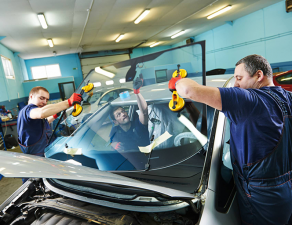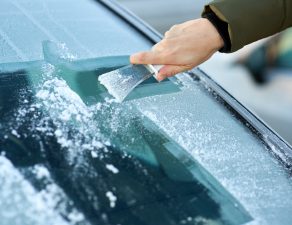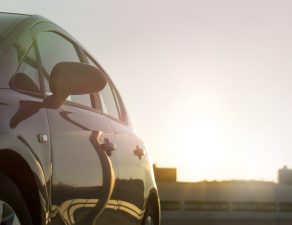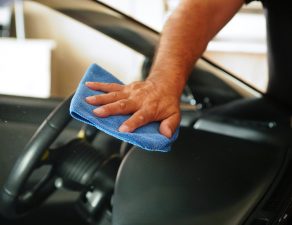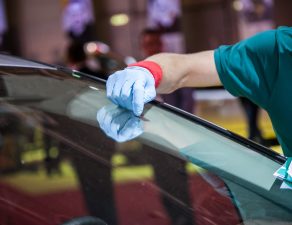The night is young, and you’ve just finished a nice dinner with a couple glasses of wine. You and your spouse decide to grab a sweet dessert at the local ice cream shop before heading home. After getting into your car, you are met with a surprise–the ignition won’t turn.
A message pops up on your windshield dash– “Blood Alcohol Concentration levels are too high to operate a vehicle legally in your jurisdiction. Please wait and hydrate for the next 45 minutes, and then try again.”
It’s 11pm on a Tuesday. Both you and your spouse have work in the morning, and restaurants within walking distance are closing soon. Would you find this technology to be a reassuring safety feature, or would you find it to be inconvenient and unnecessary?
Instantly Get Up to 3 Local Windshield Replacement Quotes
Anti-drunk driving technology has been in the works since 2007, with Toyota and Nissan spearheading the development efforts. After more than 7 years in development, you’d think that at least a beta-version would have been released for the public. Unfortunately, it seems the technology is much harder to champion than originally thought.
Also, the initial reactions to the test vehicles that Nissan released, were anything but rosy and united. Half of the reactions were in support of the possible life-saving technology. The other half were disgusted by the invasion of privacy that comes with the new technology.
Regardless of reactions, it’s clear that something must be done to prevent the yearly rising number of injuries and deaths that are caused by drunk driving. Here’s some sobering facts:
- In 2013, one third of all traffic-related deaths were caused by alcohol-impaired crashes, and over 290,000 were injured from alcohol-impaired crashes.
- Drivers involved in a fatal car accidents who had a Blood Alcohol Concentration (BAC) of 0.08% or higher, were six times more likely to have a prior DWI conviction.
- More than 1,000 children (age 14 or younger) were killed in these alcohol-impaired crashes.
Sadly, 100 of those children were riding in the vehicle with the alcohol-impaired driver. - More than 1.4 million people were arrested for driving under the influence of alcohol and/or narcotics in 2010.
- Every 2 minutes, someone is injured in a drunk driving accident!
With numbers like this, it’s surprising how controversial the topic of intelligent drunk driving technology is… Especially when great strides have been made, and can be made, in the name of preventing death and injury while driving.
Yet, still we are without successfully implemented drunk driving technologies, years after they have been initially developed.
2007: Nissan Announces It’s Drunk Driving Concept Car, Toyota Follows Suit
Much like the technology installed in a vehicle after someone has been charged with a DWI or DUI, Nissan started off its drunk driving preventive measures with a BAC detector. Rather than it being an outright breathalyzer that one must blow into and pass in order to start the vehicle, Nissan thought of something slightly more clever. One of the downfalls of the standard breathalyzer BAC detectors, is that a driver could ask someone else to blow into the breathalyzer instead of doing it themselves, in order to override the locking system.
Instead, Nissan installed a highly sensitive alcohol detector in the shift knob of the vehicle. The knob detects alcohol by measuring the BAC in the sweat from someone’s palm as they attempt to drive. If the BAC is above the pre-determined level, the vehicle will be automatically immobilized by locking the transmission. Even if someone else were to touch the knob to get the vehicle started, the minute that the system detected alcohol from the touch of a driver, the system would shut the car down. Whenever this happens, a voice alert would also come over the car’s system to warn the driver of why the vehicle had been shut down or failed to start.
On top of the shift knob sensor, Nissan also installed odor sensors in both the driver and passengers seats to detect alcohol within the air of the vehicle’s cabin. If alcohol is detected, a voice alert would be activated, as well as a text alert on the vehicle’s navigation dash system.

Nissan also mounted a camera in the dash directly facing the driver, so as to monitor a driver’s state of consciousness. This was done by tracking the ongoing blinking pattern of the driver’s eyes. Once the system detects any sign of drowsiness, again a voice and text message alert are triggered through the vehicle. Plus, the car will activate a mechanism that automatically tightens the seatbelt of the driver, in order to immediately get the driver’s attention.
(The idea of a camera tracking eye movement was perhaps the most controversial of all the technologies within the concept car, as several Americans felt this was an involuntary invasion of privacy, against their consent or knowledge. However, similar technology was proposed just a few years later in the state of Chicago for those who had been caught driving under the influence. Rather than just utilizing a breathalyzer, Chicago law enforcement would also install dash cams in the vehicles of perpetrators, in order to insure that those breathing into the breathalyzer device were truly the drivers. The public was not nearly as divided about this, as they believed being caught driving and drinking previously was just cause to monitor the person in question.)
Lastly, Nissan put a monitoring system for the actions of the driver itself. If it detected erratic operational behavior of the vehicle (such as distracted driving or poor navigation skills) the car would again issue voice and text alerts, as well as activating the seat belt mechanism.
While several governments around the world were drawn to the various technologies that Nissan had developed with this initial concept car, many consumers were vocal about their distrust for the system and their unwillingness to purchase such a vehicle.
Toyota followed Nissan, saying it was developing a “fail-safe system for cars that detects drunken drivers and automatically shuts the vehicle down if sensors pick up signs of excessive alcohol consumption”. This included sweat sensors in the steering wheel of the vehicle, driving behavior tracking software, and cameras with sensors that focused on the pupil of the eye. Toyota had expressed hopes to install this technology in all of their vehicles by 2009…
Today we sit in 2015, and the technology was never widely implemented by any car maker, or even government jurisdiction.
Present Day Drunk Driving Tech Announcements
More than 7 years after the initial attempts by Nissan and Toyota, the National Highway Traffic Safety Administration has announced its own development of drunk driving technology. Apparently in development since 2008, the NHTSA revealed in June of this year that they had 2 prototype candidates for their Driver Alcohol Detection System for Safety (DADSS).
One prototype shared was a breathalyzer that would either be mounted inconspicuously in the steering wheel, or in the driver’s side door. This breathalyzer would be able to “smell” your breath, even if you were not leaning closely into it. The other prototype is a touch sensor that would be embedded into the ignition button or a gear shift, that could scan your finger for BAC levels. Either system would be capable of determining the BAC level of a driver, and preventing the car from being driven if the level was above the legal limit of 0.08%.
Surprisingly, the NHTSA will not require automakers to utilize this technology when it’s ready. Even more surprisingly, is that even though this has been in development since 2008, the NHTSA says the DADSS will probably not be ready for any implementation for another few years.
Possible Future Developments Involving Auto Glass
Believe it or not, autoglass is already being used in several innovative ways. Microscopic sensors and chemicals can be added to glass as it’s being produced, and integrated into a vehicle’s electronic monitoring system.
Some of these technologies include rain sensors, sensors that detect if someone is behind the vehicle, and chemicals that can even absorb dirt and automatically clean the windshield.
While many worry that this would violate their privacy, instituting a nanny-like vigilance over drivers, Glass.net is of the firm belief that anything that can help prevent an alcohol-induced accident, especially the injuries that come with it, is worth at least trying.
At the end of the day, your judgment is impaired when you’ve been drinking. Having a backup system to alert or even prevent you from driving under those circumstances could certainly do no harm.
Like any technological advancement, much testing and regulation would need to be put in place to prevent a possible abuse of powers. For instance, the fear that one could be charged criminally simply for entering a vehicle after drinking, even if they never attempt to turn the ignition, is worth fair consideration.
However, none of this can be weighed without testing the technology widely, and addressing the issues as they crop up.
The Road to Innovation Is Paved With Testing And Feedback
Back in the day, auto glass was seen as a frivolous expense that was added to a vehicle. It took people being injured from cheap sheet glass, in order for the auto industry to move to more expensive, but much safer, tempered and laminated glass. Then auto glass makers didn’t understand the benefit of using laminated glass for the windshield, as standard protocol… Until collision testing showed that laminated glass prevented someone from ejecting from the vehicle in an accident. This was important, because preventing ejection from the vehicle significantly increased the chance of survival after an accident. Eventually testing for types of sealants and standards for installation were also utilized to discover and implement better safety standards.

But none of this happened overnight. It took wide implementation, testing, and the analysis of data and several circumstances to come up with proper regulations and standards for auto glass safety. As a result, today we know that your auto glass easily makes up to 60% of the cabin strength in a vehicle. Properly installed and high quality auto glass survives up to 3 consecutive rollovers, preventing passengers from being crushed. It greatly enhances the aerodynamics of your vehicle, not to mention keeps you comfortable as a major source of insulation and soundproofing. The stats go on and on.
Hopefully at some point a major auto maker will take the chance with implementing anti-drunk driving technology for consumer use–just as Henry Ford did with glass-enclosed vehicles. And hopefully it won’t take decades to happen.
